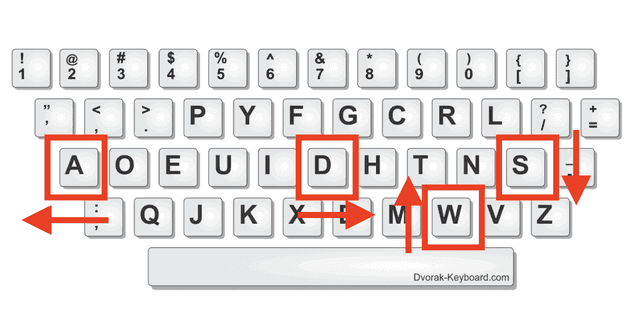When handling keyboard events, the event object (or e for short) will contain more than one property to help you determine which key the user pressed. These properties are e.key, or e.code. If you’re like me, you’ve often forgotten the differences between the two properties. While you can get away with using one over the other in many cases, it’s important to understand the distinction since both e.code and e.key work best under specific circumstances.
What is e.code?
This represents the physical key on the keyboard, not the value that pressing the key will generate. Consider the following scenario:
You have an English language QWERTY keyboard, but often toggle the language to Greek. With the English layout being enabled, pressing the “l” key will result in the
e.codebeing “KeyL”. With the Greek layout enabled, pressing the “λ” will still result in thee.code”KeyL”.
Note: the value given to us by e.code does not take modifier keys (like shift, ctrl, etc.) into consideration.
You can even play around with some code to become more familiar
What is e.key?
document.addEventListener("keydown", e => console.log("Key - ", e.key))This is the way to go if you need the digital value of the keyboard that’s been pressed. If you’re prompting someone to write their name, then you want the value outputted to the computer to match the value that the user inputted, regardless of language or keyboard layout.
Try changing your keyboard layout to DVORAK, and you’ll see that instead of printing out the physical representation of the key, it prints out the digital representation of the key, i.e., the character that you expect to be printed to the screen when you press it.
How do I choose which one to use?
You need to ask yourself “is the action is language specific?”
If you’re creating a controlled input for a text field, you’ll want to use e.key as it maps to the digital representation of the physical key. Regardless of which keyboard layout or keyboard language a user is using, e.key will capture the user’s literary intent.
If this is all too abstract, the table below shows how different keyboard layouts are handled using e.key and e.code.
| QWERTY | DVORAK | |
|---|---|---|
| e.key | Hello, my name is Andrico | Hello, my name is Andrico |
| e.code | hello, my name is andrico | d.nnrw mf bam. co abepcjr |
So if using e.code outputs gibberish for anything other than the QWERTY, why would we ever want to use it? e.code is great for handling actions that are not language-specific and instead related to the physical layout of the keyboard.
A great example is creating the controls for a browser game. You’d normally move your character using the w, a, s, d keys. This makes sense because on a QWERTY keyboard layout, they make a nice arrow.

The physical position of WASD in a QWERTY layout
For someone who’s playing games using a DVORAK keyboard layout, w, a, s, d makes no sense whatsoever:

The physical position of WASD in a DVORAK layout
Wrapping up
If the action is language-specific, such as creating a controlled input for a text field, e.key should be used. If the action is not language-specific, such as creating controls for a browser game, e.code is a better choice. If you have the resources to do so, allow your users to remap keys and shortcuts on your sites; it’s a big accessibility win.